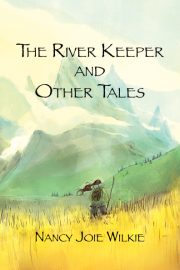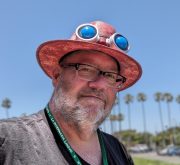Plotting Asleep
by Luna Corbden
 I’ve heard that insomnia is a common problem among writers. At least, it is for me.
I’ve heard that insomnia is a common problem among writers. At least, it is for me.
I also frequently get stuck on “what happens next?” in my stories, which leads to me staring at the blank page, which leads to me opening Twitter, after which my writing session is shot. I might get stuck on that problem for weeks and weeks, my mind completely unwilling to focus on solving it when there’s nothing but a boring white page in my visual range.
What if there was a way to (partially) solve both problems at once?
One of the reasons I have insomnia is because I churn on anxious thoughts whenever my mind has a spare moment. I have a hard time “shifting gears” from working on the harried perplexities of my day to the relaxed, unconscious part of night.
Even though I understand this, the cycle compounds into frustration, as that just gives me one more thing to worry about. My concern about being sleep-deprived itself produces anxiety or even anger, which just takes me that much farther from sleep.
Worries keep the mind in a verbal state, and a brain that’s thinking in words can’t fall asleep. Have you ever monitored yourself while drifting off, and noticed that you slip from a “logical” state one moment into the twilight of almost-dreams the next?
It’s clear: a visual, metaphorical state of mind lends itself well to sleep.
I find I best fall asleep if I have something visual to think about, something I can play in my head like a movie. Something to promote twilight time and quiet that verbal stream until it transforms into the images that will eventually become dreams. If I can find something visually interesting to think about, I fall asleep much faster.
Isn’t it fortunate then, that as a writer, I have an endless source of visual problems to solve?
The solution is pretty simple: If you’ve got an issue with your story, some unanswered questions, maybe a plot roadblock or need for world-building details, just start asking those questions as your head hits the pillow, then go about answering them.
“How will my character get out of this jam?”
“What is the villain’s motivation?”
“What kinds of plants are common on my extraterrestrial world?”
“What does my monster look like?”
Almost every time, my thoughts become primarily visual. And in this creative pre-dreaming state, the answers begin to flow. I watch my characters go through their motions. I put different obstacles in their paths, to see how they react. I test different outcomes, different world rules, and different conflict points. It’s like watching my own private YouTube series that flows into my dreams.
Almost every time, at least a few answers to my questions will float to the surface and click into place.
Instead of dreading sleep, I start looking forward to it.
Now this is where I say it partially solves both problems. Because there is a downside. At times, it can increase insomnia.
If my mind offers up only a couple of answers, I can remember them the next morning, especially if I have a “movie clip” of the story to replay. Thankfully, visual memory is way more powerful than rote verbal memory. When this happens, I’m still on my way to slumberland.
But if the answers begin to get detailed or verbal (a very specific sequence of events, multiple insights on symbols to include and how they relate to the theme, maybe some dialog or specific ways of phrasing a thought) this is where I have to sit up and jot down my ideas lest I forget them.
And this can derail my attempt to sleep.
This is still a win condition! I have insomnia either way, and now at least I have made progress on a story.
This effect can be mitigated by taking notes on paper rather than electronic devices, so screen light doesn’t send the wrong signals about the time of day. I keep a notebook within arm’s each of bed, so I can stay sleepy-cozy by moving as little as possible. Sometimes I even write short notes in the dark, to keep the light from waking me further. The handwriting is messy, but that’s ok so long as it’s legible.
These scribblings don’t need to be detailed, just enough to prompt you back to the chain of thoughts you explored the night before. Just a reminder of what “clicked.” Your neural networks are mighty, and the visual recording will play back the rest. Your memory will improve with effort. It’s just like exercise; every time you write something down, you tell your brain what kind of ideas are important and worth keeping.
I tend to find that even if I become fully awake again by taking notes, I’m still more likely to fall asleep as I continue in the visuals, more, say, than if I’d tried to fall asleep churning about all my daily problems.
But best of all, it’s reduced my general anxiety surrounding bedtime, because I have something fun to do every night. Even if my brainstorming isn’t productive, it’s a far cry better than the terrifying thoughts I’d otherwise be entertaining.
So as you’re working on your current project, give this a try as you fall asleep tonight. Think of the top three questions about your story, and drift off while imagining through them.
•••
Luna Corbden (who also writes as Luna Lindsey) lives near Seattle. Her first story, about a hippopotamus, crawled out of her head at age 4. After running out of things to say about hippopotami, she switched to sci-fi, fantasy, and horror. Her stories have appeared in the Journal of Unlikely Entomology, Penumbra eMag, and Crossed Genres. She tweets like a bird @corbden and blogs at www.corbden.com. Her novel, Emerald City Dreamer, is about faeries in Seattle and the women who hunt them.


